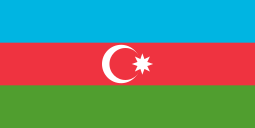
From Hadrut to Shusha: Topkhana forest, witnessing a new history
18 December 2020

Our visit to Khojavend region coincided with the anti-terrorist operation carried out by the State Security Service in the north-west of Hadrut settlement.
According to a joint statement by the State Security Service and the Ministry of Defense, such an operation was due to the fact that after the announcement of a ceasefire, a part of the Armenian armed formations remained in the area.
On November 26, in the liberated village of Sur, Khojavend region, three servicemen of the Azerbaijani Defense Ministry were killed, two were wounded. And on December 8, while installing communication equipment in the area of the village of Hadrut, one more serviceman was killed, an employee of Azercell was seriously injured.
After leaving Hadrut, we began to climb the mountains, following all the necessary safety instructions. At every checkpoint through which we passed, the soldiers stopped us, repeated the instructions, and sometimes added new details, depending on the situation on the ground. In addition, just in case, we were given a separate escort in Hadrut. He was first exploring the area ahead, after which we were following him.

As we climbed the mountain, the weather changed several times. For -a while, we even drove along snowy roads.
Probably, social network users in Azerbaijan remember the stone column painted in the colors of the “NKR” flag in Hadrut. The WarGonzo channel of Semyon Pegov, a Russian blogger known for constantly fooling the Armenian audience with his "victorious reports" from the war zone during the war, aired a story with this stone on the background, allegedly confirming that Hadrut is still under the control of the Armenian army. At present, the column is in place, repainted in the colors of the Azerbaijani flag. We drove past it and continued our ascent.
The tops of the mountains were covered with snow, and the villages at their foot were covered with fog.
Military vehicles and sometimes civilian cars were visible in the area. The latter were mainly cars belonging to organizations engaged in the construction of infrastructure in the area (Azersu, State Agency for Highways, etc.).
On the right and left of the road, passing through our liberated villages, we reached Tug village of Khojavend. There are two roads divided to the right and left: one leads to the area called the Red Bazaar, and from there to Shusha. Currently, this territory is under the control of Russian peacekeepers. The left road leads to the village of Kohne Taglar. Boyuk Taghlar is located slightly above it.
Infrastructure works are being carried out in both villages, government agencies are functioning. Boyuk Taglar is already illuminated. Work is progressing rapidly, and electricity will probably be provided to these places soon.
Part of the road from Fizuli to Shusha passes through Khojavend region.
During the 44-day military operation, the Azerbaijani army made its way through the forest area from here to Shusha, liberated the city by reaching Dashalti.
This is the very famous Topkhana forest. It is immediately noticeable that there were fierce battles around. Destroyed military equipment belonging to the Armed Forces of Armenia, clothes and belongings of Armenian soldiers, scattered along the sides of the roads and even in the depths of the forest.
The deforestation of Topkhana by a group of Armenians in 1988 sparked important political events and bloody clashes for the future of Nagorno-Karabakh, igniting a war that lasted more than 30 years.
Now here you can hear not the clatter of axes, but the rumble of heavy machines, excavators and tractors: a road to Shusha is being built through the forest. A completely different, new history is being written in Topkhana.












